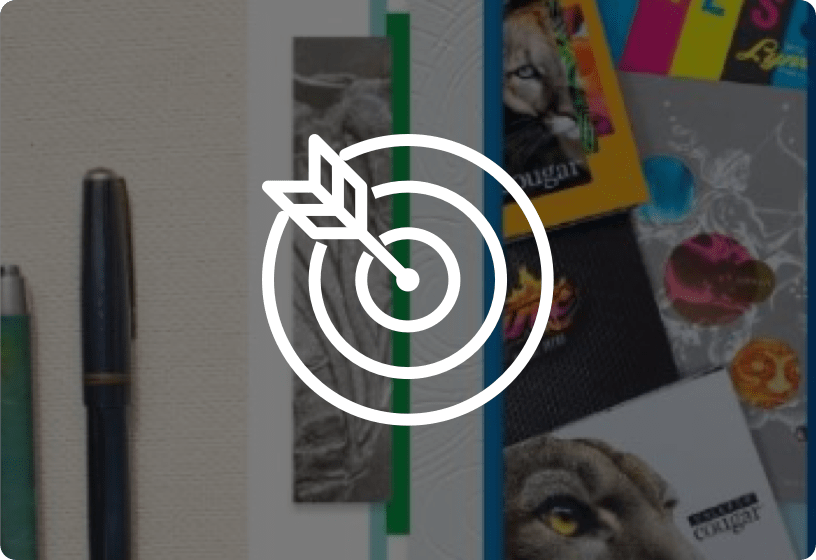
Tips & Best Practices
Get the latest tips and best practices to help you do your best work, all on paper.Episodes
About This Episode
It’s a challenging time for printers in today’s environment. Deborah Corn, self-proclaimed intergalactic ambassador to The Printerverse at Print Media Centr, talks to the Paper Matters podcast about how printers can connect with buyers when people are working in a remote world. Deborah will discuss creating meaningful relationships with customers and different ways printers can position themselves to differentiate themselves and achieve success during a pandemic.
You Don’t Want to Miss:
- How to connect with print buyers in a COVID-19 world
- The best way to promote your capabilities digitally
- Pushing outside your comfort zone and being an idea generator
- The value of working with a paper company that invests in sustainability
About This Episode
The process for producing inspired print projects is a compilation of many things. It’s paper selection, brand messaging, techniques and design, to name a few. Join us as we talk with Jill DiNicolantonio, Director of Creative and Brand Engagement for Millcraft and Parse & Parcel’s founder. Jill, a self-professed paper enthusiast, is intimately familiar with the superpower of print and has worked with many creatives and print representatives to help them figure out the best paper options for their print projects.
You Don’t Want to Miss:
- How to pick the right paper for your print projects
- Understanding how graphic design, paper and print production work together to get the best results
- The differences between coated and uncoated paper
- How to save money on your print projects
- How to partner with your printer
- How to use a swatchbook
- The best resources for graphic designers
Quotes from this Episode:
“It’s what I’ve done my entire career, which is helping to educate and empower creatives to make paper a part of their print design process.”
“A great printer partner is invaluable. But the designer needs to take ownership and understand the different aspects of paper and print production in order for their piece to turn out the way they’ve intended.”
“Paper is hugely powerful in helping to extend the brand message. When we talk about paper attributes, most people think of color first, but I say go deeper and start to think about the tactile experience of paper. And that’s really where you get into finishes and things like opacity, but how does that paper feel? There’s a way where you can subtly impart some design nuance and brand messaging into the print piece through your choice of paper.”
Resources:
- Visit Millcraft for mock-ups or samples.
- Visit Parse & Parcel for paper resources to inspire creative print design.
- Download the “How to Read a Swatchbook” Guide.
- Request your complimentary subscription to Paper Matters magazine
- Visit domtar.com for our blog, request print promotions and much more
- Follow us on Facebook, Instagram, LinkedIn or Twitter
About This Episode
About This Episode:
After years of working in an office, going remote can be a challenge—but it can also be an opportunity to boost productivity, enhance work/life balance, and create a happier, more satisfied workforce. For anyone looking to improve their remote work game, or get tips for managing remote teams, “Sorry I was on Mute” is an excellent resource. An informative blog built for remote team members and managers, it tackles a variety of topics to make remote work more successful. In this episode, we speak with Aakash Gupta, Founder of Sorry I Was on Mute, about how to set yourself (and others) up for success, stay productive, communicate effectively, and enhance your personal brand within a remote work environment.
You Don’t Want to Miss:
• Benefits of working remotely—for workers and employers
• Tips for managing remote workers and building an effective remote work culture
• How to keep your staff connected when working remotely
• Overcoming communication challenges and measuring the effectiveness of your remote team
Quotes From This Episode:
“Remote work had a bit of a stigma pre-pandemic. The norm was to have all your staff in the same place, so remote team members were seen more as part-time elements. Remote workers faced problems like fragmented communication, loneliness and a lack of team integration. Many of these issues are being addressed much better now that remote working has become the norm.”
Resources:
- Visit the Sorry, I Was On Mute Blog to learn more about Aakash Gupta, his team and tips on remote work.
- The blog includes: Ideas for Remote Team Managers
- As well as: Resources for Remote Workers


